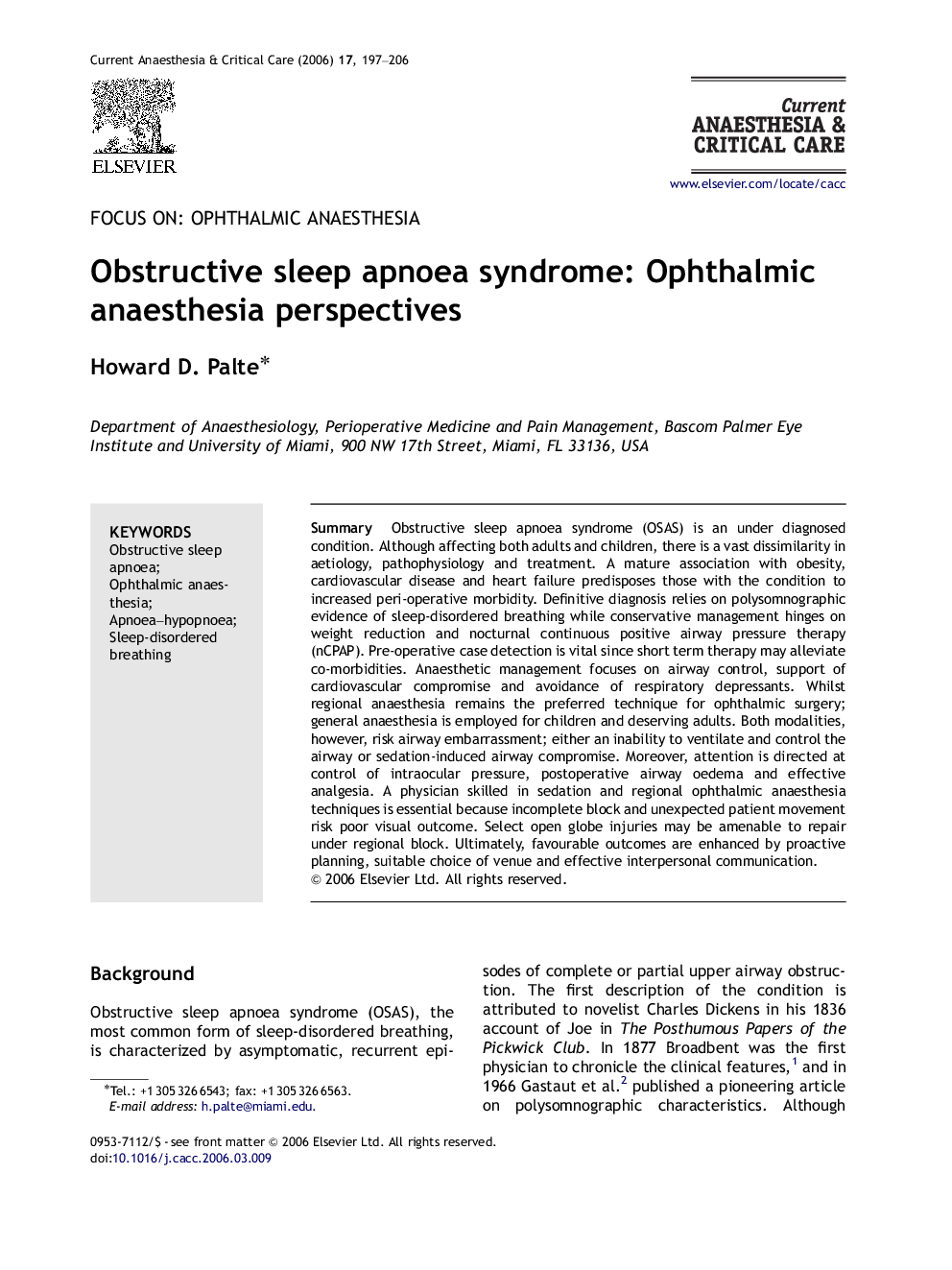| Article ID | Journal | Published Year | Pages | File Type |
|---|---|---|---|---|
| 2607817 | Current Anaesthesia & Critical Care | 2006 | 10 Pages |
Abstract
Obstructive sleep apnoea syndrome (OSAS) is an under diagnosed condition. Although affecting both adults and children, there is a vast dissimilarity in aetiology, pathophysiology and treatment. A mature association with obesity, cardiovascular disease and heart failure predisposes those with the condition to increased peri-operative morbidity. Definitive diagnosis relies on polysomnographic evidence of sleep-disordered breathing while conservative management hinges on weight reduction and nocturnal continuous positive airway pressure therapy (nCPAP). Pre-operative case detection is vital since short term therapy may alleviate co-morbidities. Anaesthetic management focuses on airway control, support of cardiovascular compromise and avoidance of respiratory depressants. Whilst regional anaesthesia remains the preferred technique for ophthalmic surgery; general anaesthesia is employed for children and deserving adults. Both modalities, however, risk airway embarrassment; either an inability to ventilate and control the airway or sedation-induced airway compromise. Moreover, attention is directed at control of intraocular pressure, postoperative airway oedema and effective analgesia. A physician skilled in sedation and regional ophthalmic anaesthesia techniques is essential because incomplete block and unexpected patient movement risk poor visual outcome. Select open globe injuries may be amenable to repair under regional block. Ultimately, favourable outcomes are enhanced by proactive planning, suitable choice of venue and effective interpersonal communication.
Related Topics
Health Sciences
Medicine and Dentistry
Anesthesiology and Pain Medicine
Authors
Howard D. Palte,
